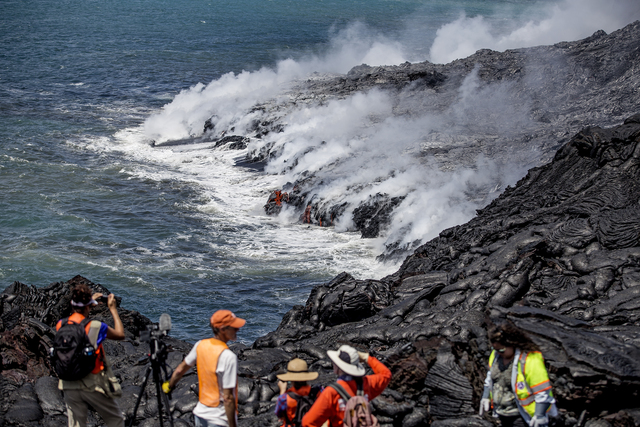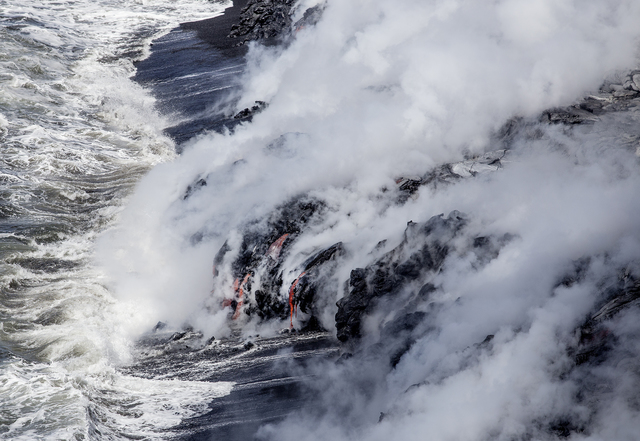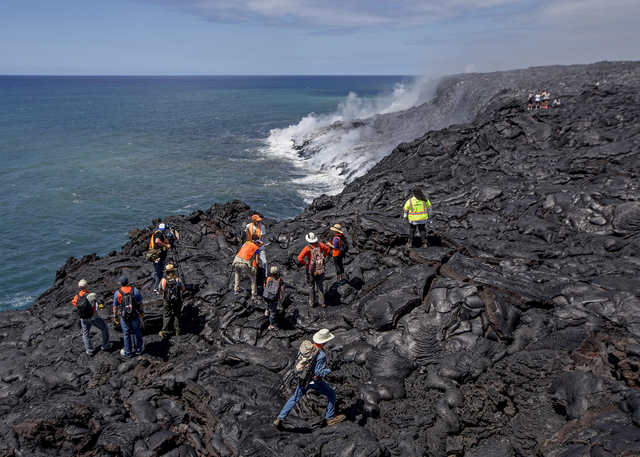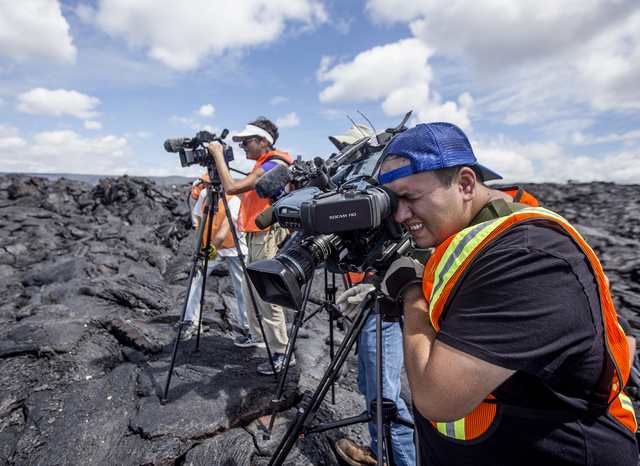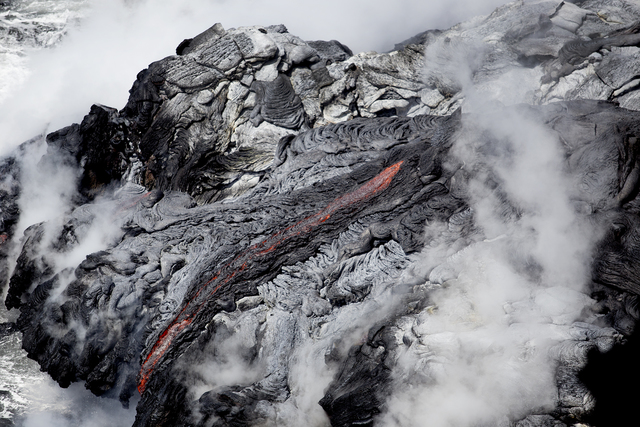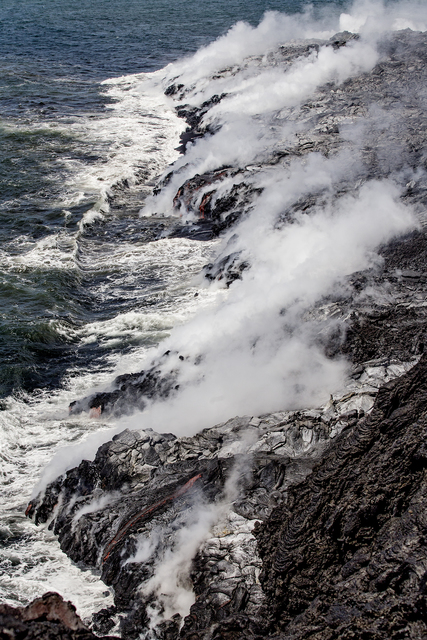The journey starts deep within Earth and ends in one spectacular collision.
On the southeast coast of Hawaii Island, molten rock continues to spill into the Pacific Ocean, creating billowing clouds of steam and adding new land to the rugged coastline.
“It’s incredible,” said Matthieu Brun of France, while watching the ocean entry Tuesday. “Lava and the ocean, the two opposites.”
That view changes by the day.
About 8 acres of new land has been created since the Kamokuna ocean entry — the first since August 2013 — started three weeks ago, according to the Hawaiian Volcano Observatory. That adds to the 444 acres of new land remaining from lava flows entering the ocean in the area since 1986.
A black sand beach also now rests at the base of this delta, as fine particles created by the merger of water and lava from Kilauea’s Pu‘u ‘O‘o vent are thrown back against the island by crashing waves.
But that land is hardly stable and continues to pose safety issues for visitors, officials noted during a press tour Tuesday.
HVO spokeswoman Janet Babb said these lava deltas that stretch out into the sea are essentially sitting on rubble.
“They are deceptively stable looking,” she said.
A collapse can hurl chunks of rock and lava, potentially harming visitors on the cliffside.
At least one such collapse has occurred so far, according to HVO.
Such risks have done little to deter people from flocking to the site just inside Hawaii Volcanoes National Park.
After all, where else can you see such powerful natural forces at play?
Kanani Aton, Hawaii County Civil Defense spokeswoman, said an average of 1,500 people a day will visit the Kalapana lava viewing area, with many taking the trek to the lava flow itself.
That’s just while security is available from about 3-9 p.m.
The busiest days, she said, see as many as 3,000.
Aton said the county plans to manage the viewing area as long as the lava flow continues to be accessible.
Some Kalapana residents are making the most of it by offering tours, renting bikes or selling refreshments to thirsty hikers.
Ernie Aviles, with Active Lava Hawaiian Tours, said the trips can take three hours on bicycle.
“On a skill level, I would say it’s a medium,” he said, “just because of the elements — the sun, the wind, the humidity. Any one of those can put you in jeopardy.”
Lots of water and proper footwear are among the musts hikers should have with them, officials say. Long pants, flashlights and hats also are recommended.
The trip, whether by bike or on foot, follows a gravel road cut about two years ago over the former Kalapana-Chain of Craters Road, itself covered by previous lava flows.
It didn’t take long for history repeat itself.
The lava flow, which has reached 6.7 miles in length, severed the roadway the day before it reached the ocean.
The road, built as an alternate route in case the June 27 lava flow severed Highway 130 near Pahoa, cost the county $5.1 million. That flow ceased after the latest flow started in May.
Baret Ottani, county Public Works spokesman, said in July that the county was still working with the Federal Emergency Management Agency for reimbursement.
The flow has crossed the road multiple times since then.
One such lobe that breached the road since Friday was still warm and produced a bright red glow within its cracks.
The trek is 4.2 miles one way from the Kalapana side and 3.8 miles if accessed through the park, though that’s expected to shorten as the lava flow widens.
Traveling from the county side remains safer, officials say, since it is upwind of the toxic steam the ocean entry produces.
But no matter where the flow is accessed, officials say the lava, seen by some as the physical embodiment of the goddess Pele, should be respected.
“To poke or prod … is disrespectful to many Native Hawaiians,” said Jessica Ferracane, national park spokeswoman.
Doing so also could get you in trouble.
Defacing lava is against the law within the park.
Ferracane said “bad behavior” has decreased with the help of education.
So far, no citations have been issued, she said, though there have been several verbal warnings.
Email Tom Callis at tcallis@hawaiitribune-herald.com.







